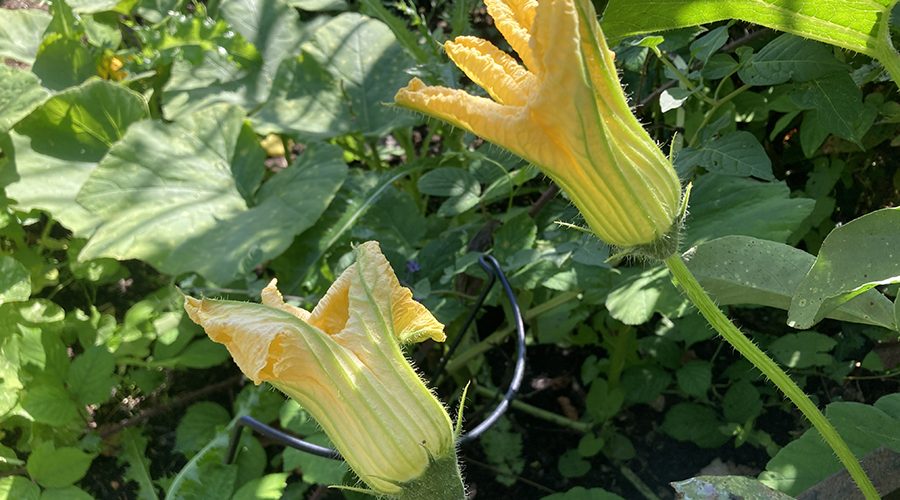These squashes, planted in May, have hardly produced any female flowers yet. This is such a sign of the cool weather that we had in early summer and things not hotting up until August.
Normally, cucumber, courgette and squash plants will put out male flowers, like the ones pictured here with the long stalks, early in the season while it is still cool. Once the temperatures rise and there are more pollinators about, the plants start putting out female flowers which have tiny unformed fruits attached. Once pollinated, those fruits will start to grow.
With the lower than normal temperatures that we had in the early part of summer this year, across many parts of the country, you may find that your plants haven’t put out many female flowers at all. As a result, you’ll be getting fewer courgettes and cucumbers than expected and may not have many (or any) viable winter squash or pumpkin fruits.
With the warmer weather now, you may find that more female flowers start to appear. This is good news for courgettes, summer squashes and cucumbers as it’ll give you a chance to harvest a fair few before the plants die back in autumn. For winter squash and pumpkins, if there aren’t any established fruits already growing by now, you’re unlikely to get a crop before the first frosts arrive. You could hang in there – giving the plants a weekly liquid feed, covering them with fleece or a cloche tunnel at night for warmth, and pinching out the growing tips as soon as you get one or two fruits on a plant – and hope for the best, or pull the plants up and use the space for planting some autumn crops this September to grow over winter. Kale, Spinach and Chard would all be good options, or you could plant up a bed of winter lettuces and salad leaves.

